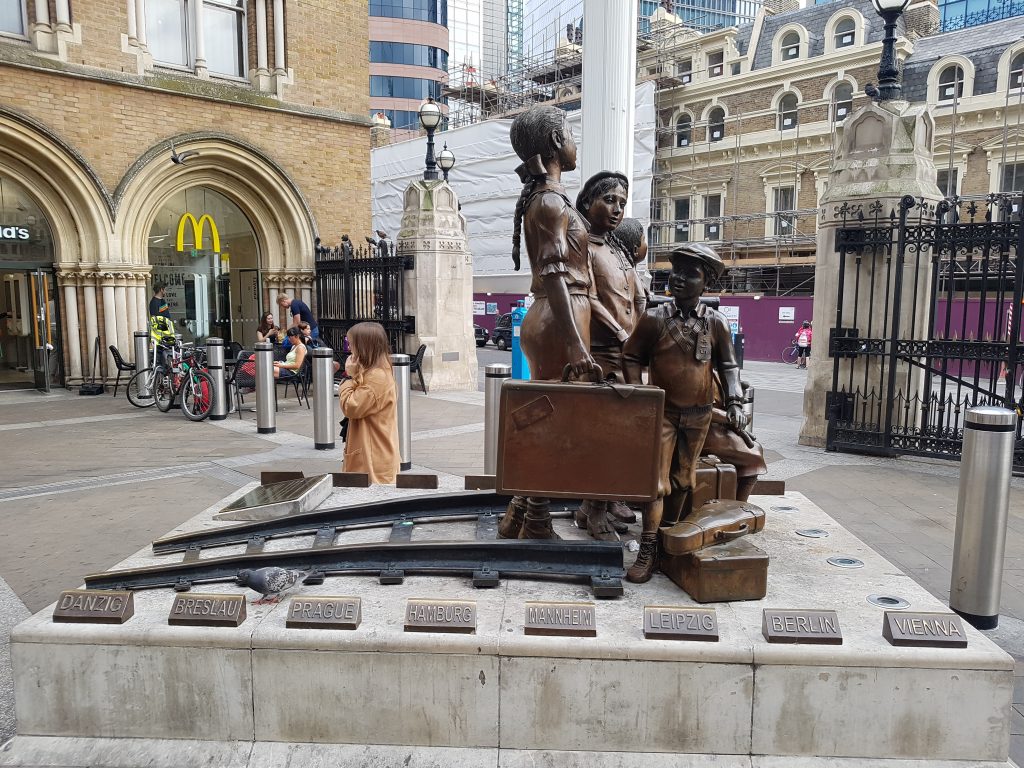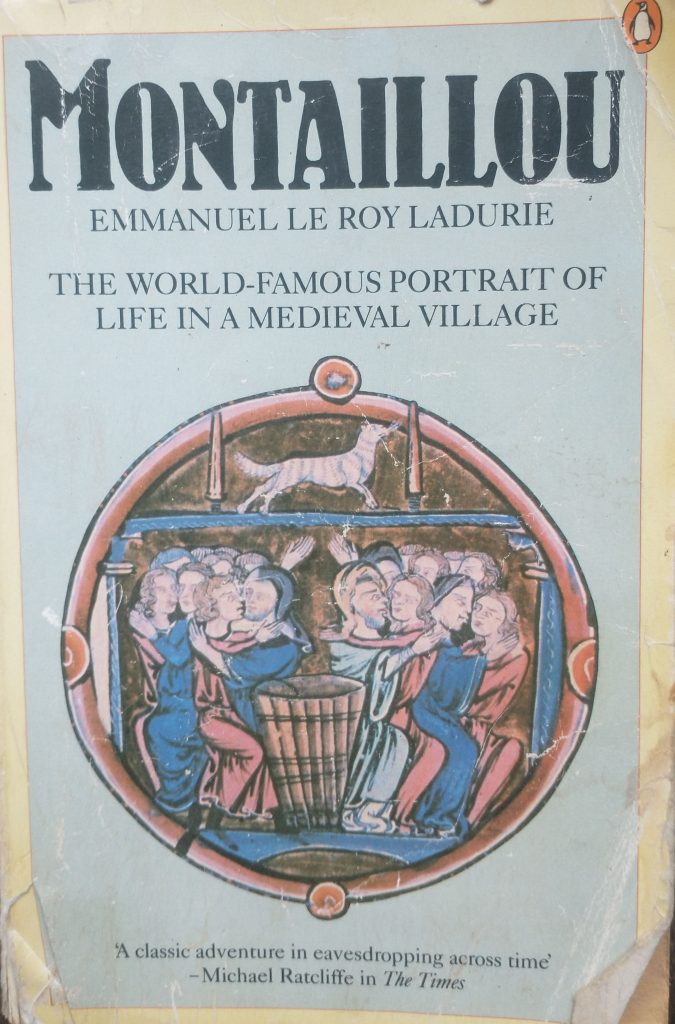
Statue for Holocaust Memorial Day
The statue commemorates the arrival of Jewish children by train at Liverpool St Station, In London. This was 1938/9 in the Kindertransport. They were sent by parents desperate to save their children from fascist genocide in Germany and Austria. The children were unaccompanied and, as depicted in the statue, stand proud as they arrive in a strange country. They are tagged. And the train track represents both the trains to the death camps, and the train to safety. There are some great photos and more information on the statue in: talkingbeautifulstuff.com

Holocaust Memorial Day and Montaillou
On the subject of prejudice, genocide and abuse of power. I was reminded of one of the formative reads of my life. I met the great Emmanuel Le Roy Ladurie at dinner at my father-in-law’s house in the 1980s. I was awestruck. Because Montaillou was one of the early histories ‘from below’. The focus was not on kings, queens nor on the flux of states and empires. No, the focus was on the lives (and deaths) of ordinary people. Something that has continued as a focus of my historical interest.
Nor, before Ladurie, had I imagined that medieval lives could be so minutely brought to life. The book was a sensation, selling over a quarter of a million copies. Professor Ladurie became a media star, and, it remains one of the great historical reads. (Of course, the book and the historiography now attracts some criticism, but do read it!)
The context of the story is appalling. In 1208, the Pope decided to launch a crusade against heretics in the South of France. This is about the genocide of the Cathars. The lives of the persecuted are revealed under interrogation by the Cathodic Inquisition. Cathars had many unorthodox and ‘heretical’ ideas. They believed in a Good God and an Evil God. We, humans, are all angels trapped in this terrible world by the Evil God. Women and men were equal and could be reincarnated into each other’s bodies. Our lives were spent awaiting the time we became ‘perfect’ and released to our spiritual form for eternity.
Cathar Massacre at Béziers
From the 21st Century, these ideas seem nor more nor less irrational than mainstream religions. But these opinions ‘justified’ a Crusade and Inquisition that followed which were truly savage, with many thousand slaughtered. For example, on 22 July 1209, the Catholic forces were led by Arnaud-Amaury. He was not only the Commander of the army but also a Cistercian abbot. Many of the citizens of Béziers were seeking refuge in St Mary Magdalene. The abbot ordered the doors to be battered down to get at the refugees inside. When asked how the soldiers could separate the Catholics from the Cathars. He replied “Caedite eos. Novit enim Dominus qui sunt eius“—”Kill them all, the Lord will recognise His own”.
All 7,000 men, women and children seeking sanctuary were killed. Thousands more in the town were mutilated, blinded, dragged behind horses, used for target practice and massacred. Arnaud-Amaury wrote to Pope Innocent III
“Today your Holiness, twenty thousand heretics were put to the sword, regardless of rank, age, or sex.”
But, despite this reading Montaillou is a pleasure. It brings those persecuted souls back to life in all their human glory. Also a reminder that it is by intolerance and ‘othering’ of normal homo sapiens which allows the conditions for evil to flourish. We have to treat all human life as sacred. And bring to bear our human empathy and capacity for mercy. Anything less allows the slaughter of the innocent.
OnThis Day
Today is also the Roman Festival of Castor and Pollux. (more on the divine twins on my post on the 15th July at the other festival of the Dioscuri).
1998 – President Clinton ‘did not have sex with that woman’.
First written in January 2023 and revised Jan 2024, 2025
